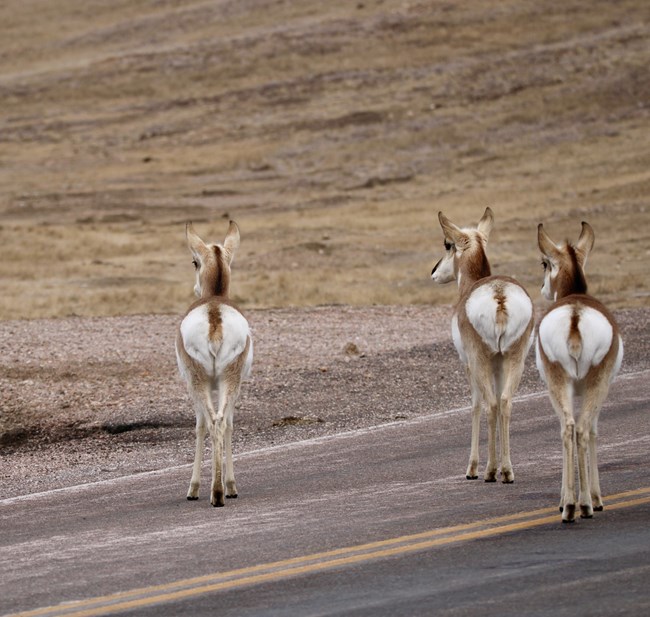
NPS Photo / Peelee Clark 
NPS Photo / Peelee Clark One of the park's most unusual residents is the pronghorn “antelope”. Pronghorns are found in North America and nowhere else in the world. They have roamed the plains and deserts unchanged for over a million years. Some call them antelope because they resemble African antelope, although the two are not closely related. They are the only surviving member of their family, Antilocapridae. The pronghorn’s closest living relatives are the giraffe and okapi. 
NPS Photo / Peelee Clark As the fastest North American land mammal, pronghorns can reach speeds up to 60 miles per hour for about half a mile. At top speed, they cover the ground in strides up to 24 feet and can run for longer distances at speeds of 30 to 40 miles per hour. There are no predators that can match their speed today, so it’s thought that they evolved to outrun the extinct American cheetah. Despite their speed, pronghorns cannot jump well and will dive under fences if they can’t get around them. Reintroduction
More About Pronghorns in National Parks |
Last updated: July 9, 2023
